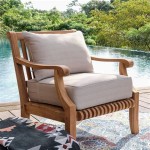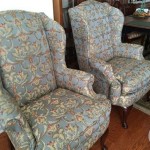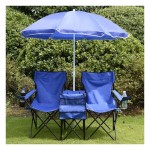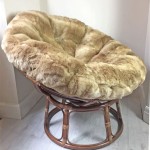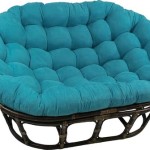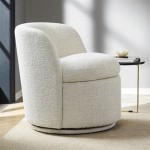Cafe Table and Chairs: Selecting the Right Indoor Furniture
The selection of cafe tables and chairs for an indoor space is a crucial aspect of designing an appealing and functional environment. These furniture pieces significantly contribute to the overall aesthetic, comfort, and operational efficiency of the establishment. Factors such as material durability, style consistency, space constraints, and customer comfort must be carefully considered to ensure a successful and inviting cafe setting. This article explores key considerations when choosing indoor cafe tables and chairs, providing a comprehensive overview of important elements to evaluate.
Durability and Material Considerations
The longevity of cafe furniture is directly tied to the materials used in its construction. High-traffic environments demand durable materials that can withstand constant use and potential spills. Commonly used materials for indoor cafe tables and chairs include wood, metal, and various composites. Each material possesses distinct characteristics that impact its suitability for specific cafe environments.
Wood: Solid wood offers a classic and warm aesthetic, often preferred for cafes aiming for a rustic or traditional ambiance. Hardwoods like oak, maple, and beech are particularly durable and resistant to scratches and dents. However, wood requires regular maintenance, including cleaning and occasional refinishing, to prevent damage from moisture and stains. Wooden furniture is also susceptible to warping in environments with fluctuating humidity levels. The cost of solid wood furniture is generally higher compared to other materials.
Metal: Metal frames provide excellent strength and stability for both tables and chairs. Steel and aluminum are frequently used due to their durability and resistance to corrosion. Metal furniture is often powder-coated to enhance its appearance and protect it from scratches. Metal chairs can be stacked for easy storage, making them a practical choice for cafes with limited space. While metal is durable, it can sometimes feel cold and less inviting than wood; however, this can be mitigated by incorporating cushions or upholstery.
Composites: Composites such as laminate and resin offer a balance of durability and affordability. Laminate tables are resistant to scratches, stains, and heat, making them a practical choice for high-use surfaces. Resin chairs are lightweight, easy to clean, and available in a wide range of colors and styles. Composites are often more resistant to moisture than wood and require less maintenance. However, they may not possess the same visual appeal as solid wood or the industrial aesthetic of metal.
When evaluating materials, it is important to consider the expected lifespan of the furniture and the level of maintenance required. Investing in high-quality materials upfront can save money in the long run by reducing the need for frequent replacements.
Style and Aesthetic Cohesion
The style of cafe tables and chairs should complement the overall design concept of the establishment. The furniture should contribute to the desired atmosphere, whether it's modern, vintage, industrial, or eclectic. Consistency in style creates a cohesive and visually appealing environment that enhances the customer experience. Considerations should include the shape, color, and detailing of the furniture.
Modern: Modern cafe furniture often features clean lines, minimalist designs, and neutral colors. Materials such as metal, glass, and molded plastic are commonly used. Modern chairs may have sleek, ergonomic shapes for added comfort. Tables may have simple, geometric bases and smooth, unadorned surfaces. A modern aesthetic projects a sense of sophistication and efficiency.
Vintage: Vintage-inspired cafe furniture incorporates elements from past eras, such as the mid-century modern or art deco styles. This style often features repurposed or distressed materials, such as reclaimed wood or antique metal. Vintage chairs may have upholstered seats with patterned fabrics or ornate detailing. Tables may have pedestal bases or intricate carvings. A vintage aesthetic evokes a sense of nostalgia and charm.
Industrial: Industrial cafe furniture emphasizes raw materials and utilitarian designs. Exposed metal frames, unfinished wood surfaces, and visible hardware are common features. Industrial chairs may have metal frames with wooden seats and backs. Tables may have metal legs and thick wooden tops. An industrial aesthetic creates a rugged and urban atmosphere.
Eclectic: An eclectic style combines elements from different eras and styles to create a unique and personalized atmosphere. This style allows for greater flexibility in furniture selection, but it requires careful planning to ensure that the different pieces complement each other. Eclectic cafes may feature a mix of vintage chairs, modern tables, and industrial lighting. The key to a successful eclectic design is to maintain a sense of balance and harmony.
In addition to the overall style, the color palette of the furniture should be carefully considered. Neutral colors such as black, white, and gray are versatile and can be easily incorporated into different design schemes. Bold colors can be used to add pops of visual interest, but they should be used sparingly to avoid overwhelming the space. The color of the furniture should also complement the color of the walls, floors, and other decorative elements.
Space Planning and Comfort Considerations
Effective space planning is essential for maximizing seating capacity while maintaining a comfortable and accessible environment. The size and shape of the tables and chairs should be carefully considered in relation to the overall dimensions of the cafe. Adequate space should be provided between tables and chairs to allow for easy movement and accessibility. Comfort is also a key factor in customer satisfaction. Chairs should be ergonomically designed to provide adequate support and cushioning. The height of the tables and chairs should be appropriately matched to ensure a comfortable dining experience.
Table Size and Shape: The size of the tables should be appropriate for the number of people expected to sit at each table. Small tables are ideal for couples or solo diners, while larger tables are suitable for groups. Round tables encourage conversation and create a more intimate atmosphere, while rectangular tables are more efficient for maximizing seating capacity. Square tables offer a versatile option that can be easily combined to accommodate larger groups.
Chair Dimensions: The dimensions of the chairs should be proportional to the size of the tables. Chairs should be wide enough to provide adequate seating space, but not so wide that they overcrowd the table. The height of the chair should be such that customers can comfortably reach the table without having to strain or slouch. The back of the chair should provide adequate support for the lower back.
Accessibility: Cafe spaces should adhere to accessibility guidelines, ensuring that individuals with disabilities can easily navigate the space and use the furniture. This includes providing adequate space between tables and chairs for wheelchair users, as well as providing tables with adjustable heights to accommodate different needs. Some chairs should have armrests to aid in sitting and standing. Careful consideration should be given to flooring materials to ensure they are slip-resistant and easy to navigate.
Comfort Features: Incorporating comfort features such as cushions, armrests, and backrests can significantly enhance the customer experience. Cushions provide additional padding and support, making chairs more comfortable for extended periods of sitting. Armrests provide support for the arms and shoulders, reducing strain and fatigue. Backrests provide support for the lower back, promoting good posture and preventing back pain. These features are especially important for cafes that encourage customers to linger and socialize.
In addition to the physical comfort of the furniture, it's important to consider the overall ambiance of the space. Adequate lighting, temperature control, and noise levels can all contribute to a comfortable and inviting environment. The placement of tables and chairs should also take into account factors such as natural light, views, and privacy. Creating a well-designed and comfortable cafe can encourage customers to return and spend more time in the establishment.
Choosing the right indoor cafe tables and chairs requires careful consideration of durability, style, and comfort. By evaluating the materials, aesthetic, and space planning factors, cafe owners can create an inviting and functional environment that enhances the customer experience and contributes to the success of their business. A thoughtful approach to furniture selection can transform a cafe into a welcoming and memorable destination.

Flash Furniture Lourdes Indoor Outdoor Commercial Bistro 31 5 Table Pe Rattan Glass Top With 4 Stack Chairs White Gray Natural Frame

Rae Round Marble Pedestal Bistro Dining Table 32 Pottery Barn

Buylateral 3pc Bistro Compact Dining Sets Black Espresso Metal Frame Particle Board Top 2 Armless Chairs

Haven Jules 5 Piece White Round Shaped Dining Table Set With 4 Bouclé Fabric Mesh Rattan Backrest Chair Black Legs Maison Boucle

Flash Furniture Marseille Indoor Outdoor Commercial Bistro 31 5 Table Black White Textilene Glass Top With 2 Stack Chairs Light Natural

Merrick Lane Benson 23 75 Square Metal Dining Table For Indoor And Outdoor Use In Orange

Narrow Bistro Table Metal Tulip Leg Smallspace Dining Walnut Wood Round Indoor 2 Seat Person Pub Furniture Etsy

30 Round White Metal Indoor Outdoor Restaurant Table Set With 2 Cafe Chairs

Moroccan Mosaic Table And Chairs Bistro For Outdoor Indoor With 2 Iron Garden Set Your Or Balcony Etsy

Coolshark Outdoor Indoor Premium Frame Wood Top Patio High Bistro Set 3 Piece Tall Table And Chairs Gray Btcs 002 The Home
